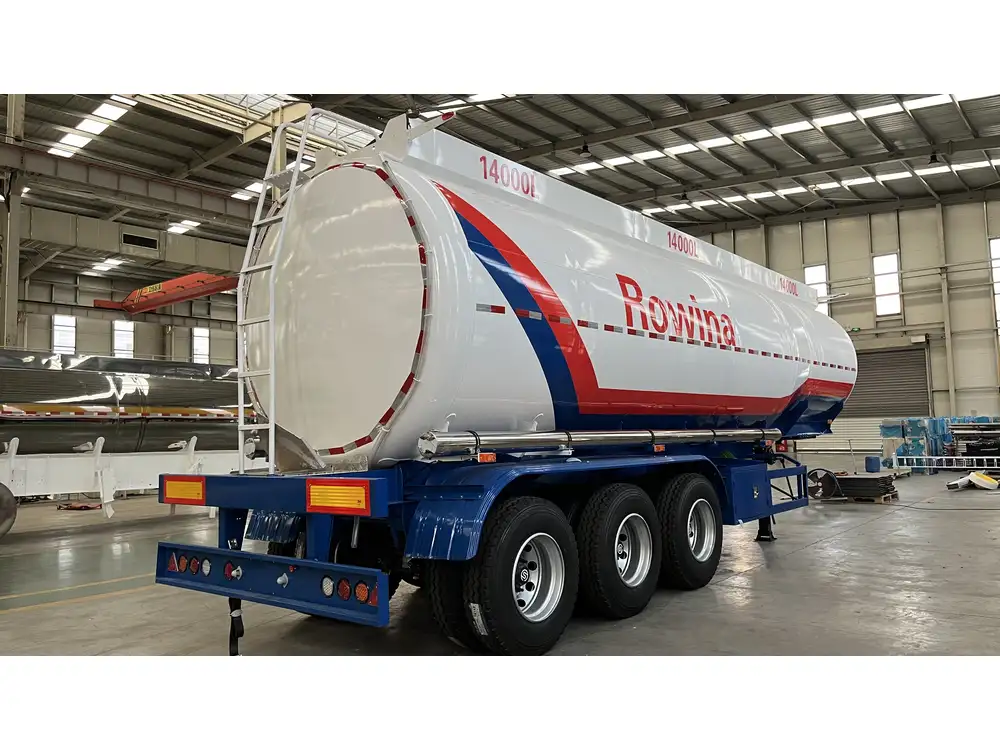When seeking to maximize the utility of a dump trailer, understanding how to correctly calculate cubic yards is paramount. This metric directly influences the amount of material that can be transported, which can enhance efficiency, minimize costs, and streamline operations. Below is an in-depth guide that meticulously breaks down the procedures and considerations required to accurately determine the cubic yardage of a dump trailer.
Understanding Dump Trailer Dimensions
In the world of dump trailers, dimensions play a critical role. A typical dump trailer is often measured in feet, with three key dimensions to monitor: length, width, and height. The following breakdown illustrates these aspects more effectively.
| Dimension | Description | Units |
|---|---|---|
| Length | The distance from the front to the back of the trailer | Feet |
| Width | The total width of the trailer from side to side | Feet |
| Height | The vertical distance from the bottom to the top when fully loaded | Feet |
Determining the Measurements
The measurement process can be simple. Here’s how to capture each dimension accurately:
- Length: Measure from the front to the rear inside edge of the trailer.
- Width: Measure from the left to the right inside edge of the trailer.
- Height: Measure from the floor of the trailer to the top edge, which reflects how much material can be stacked.
Proper measurement guarantees effective calculations later.

Calculation Formula for Cubic Yards
To quantify the volume of a dump trailer, we’ll use the formula for calculating cubic yards:
[ \text{Cubic Yards} = \frac{\text{Length (ft)} \times \text{Width (ft)} \times \text{Height (ft)}}{27} ]It is crucial to remember that one cubic yard equals 27 cubic feet. This volume-to-yards conversion can often be an oversight, leading to underutilization of trailer capacity.
Step-by-Step Calculation Guide
- Measure Your Trailer: Refer to the earlier section to accurately get the length, width, and height.
- Multiply the Dimensions: Use the formula shown:
- For example, let’s assume a dump trailer has dimensions:
- Length = 12 ft
- Width = 6 ft
- Height = 3 ft
- Calculation:
[ \text{Cubic Feet} = 12 \, \text{ft} \times 6 \, \text{ft} \times 3 \, \text{ft} = 216 \, \text{cubic feet} ]
- For example, let’s assume a dump trailer has dimensions:
- Convert to Cubic Yards: Divide the cubic feet by 27. [ \text{Cubic Yards} = \frac{216}{27} = 8 \, \text{cubic yards} ]
Practical Examples

Example 1: Small Projects
For a homeowner or contractor needing a small dump trailer for landscaping or debris removal, let’s consider a trailer with the following dimensions:
- Length: 10 ft
- Width: 5 ft
- Height: 2 ft
Calculation:
- Cubic Feet:
[ 10 \times 5 \times 2 = 100 \, \text{cubic feet} ] - Cubic Yards:
[ \frac{100}{27} \approx 3.7 \, \text{cubic yards} ]
Example 2: Construction Sites
A larger construction trailer might have dimensions like:
- Length: 16 ft
- Width: 8 ft
- Height: 4 ft

Calculation:
- Cubic Feet:
[ 16 \times 8 \times 4 = 512 \, \text{cubic feet} ] - Cubic Yards:
[ \frac{512}{27} \approx 19 \, \text{cubic yards} ]
Visualizing Volume
To aid in grasping cubically, it’s beneficial to visualize what a cubic yard represents:
- A cubic yard is equivalent to the space taken up by a 3-foot x 3-foot x 3-foot cube.
- Consider the volume in terms of typical materials: A cubic yard of soil weighs about 2,000-2,700 pounds, depending on the type and moisture content. This not only helps when budgeting for loads but assists in ensuring that you do not exceed the trailer’s weight capacity.
Potential Factors to Consider
When calculating cubic yards for a dump trailer, there are several factors that can affect the total capacity and efficiency. Here are considerations to keep in mind:

1. Weight Capacity
- Dump trailers have a maximum weight capacity, which should never be eclipsed. Overloading can lead to damages and safety hazards.
2. Material Type
- Different materials vary in density. For instance, a cubic yard of gravel will weigh significantly less than a cubic yard of concrete.
3. Load Settlement
- When filling a dump trailer, materials may settle or compress, especially with loose materials like soil or mulch. Anticipate a loss in effective volume.

4. Legal Limitations
- Be aware of local regulations regarding weight limits per axle when on public roads, which can also influence how much material can be transported.
5. Safety Precautions
- Ensure that loaded materials are below the height of the trailer’s side walls to maintain visibility and prevent spills while driving.
Tools and Resources for Calculation
For those who prefer a hands-on approach or seek ease in calculation, various online tools can aid in determining cubic yards. Here are options worth considering:
| Resource Type | Example |
|---|---|
| Online cubic yard calculators | Websites such as CalculatorSoup or MathIsFun |
| Mobile Applications | Apps like My Measure or Construction Calculator |
| Construction Handbooks | Reference materials available at hardware stores |

Conclusion
Understanding how to calculate cubic yards of a dump trailer is essential for anyone looking to maximize efficiency, whether for personal projects or business operations. This knowledge equips users with the necessary tools to enhance effectiveness, reduce costs, and ensure compliance with regulations, thereby facilitating a smoother operational flow.
This article has equipped you with not just the theoretical underpinnings of cubic yard calculations, but also practical examples, considerations, and resources that can help streamline your next project involving a dump trailer. By incorporating these insights, you can take your loading operations to the next level, optimizing every trip and ensuring that you utilize your trailer’s full potential.



